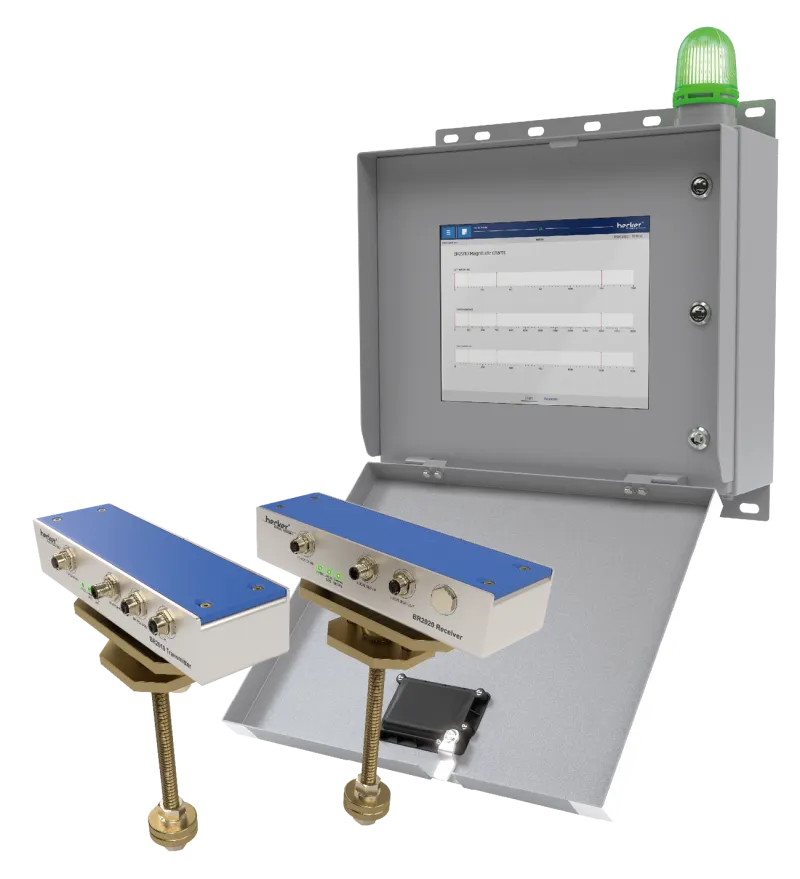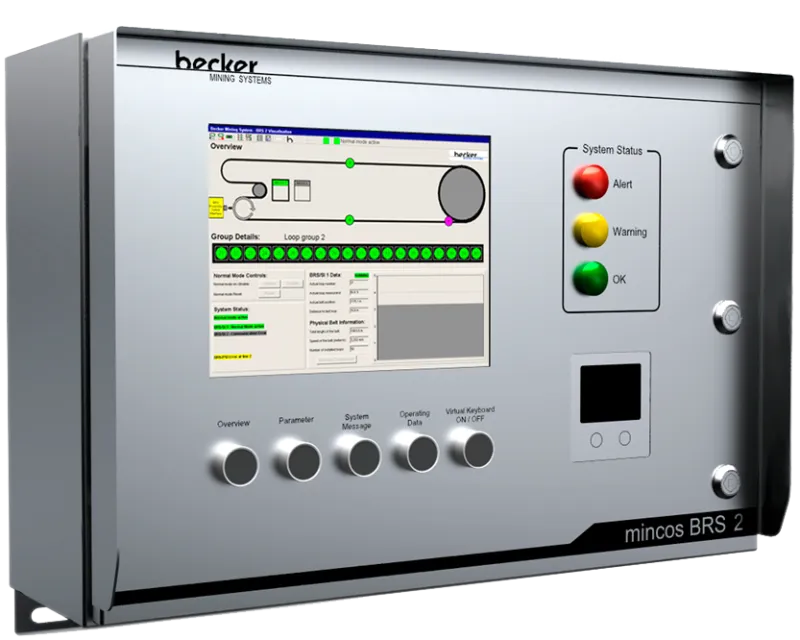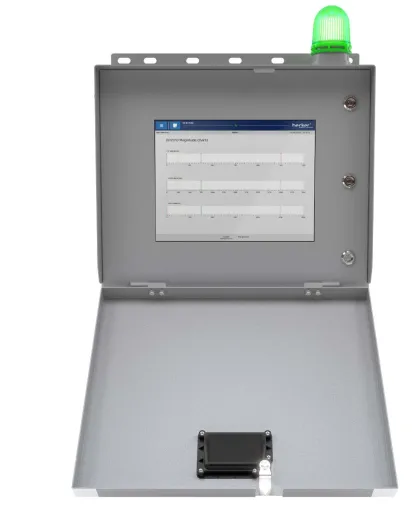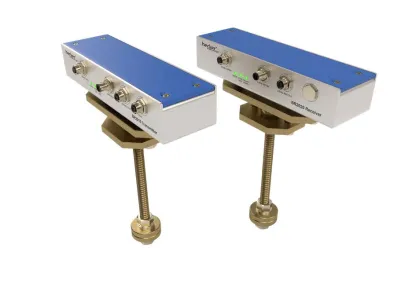The Becker BRS series of belt rip monitoring systems has a long standing history that started with the BRS1 and today culminates in the latest and most advanced system BRS4.0. The principle task remains the same: providing a reliable monitoring system for critical transport infrastructure. The BRS4.0 constantly monitors a conveyor installation for possible damage.
Detecting any kind of damage, the system will immediately stop the driving motors of a belt preventing any further damage to your critical infrastructure. Over the years the Becker BRS system has often been imitated but never duplicated. Being able to safely detect damage without false alarms is the way to drive uptime in operations.

The Belt Rip Detection System BRS2 has been developed to help increase the productivity of conveyor belts by detecting belt rips as soon and as reliably as possible. It increases the productivity of conveyors through the immediate detection of belt rips at noticeable, monitored points. Upon detection, the drives are turned off immediately in order to prevent the tear of the belt from further spreading. In this way, damage costs and downtime can be minimised.
For the monitoring of steel cable and plastic belts, inductive loops are embedded in the belt. Once installed, the BRS2 will detect the loops on the conveyor, define and number the loops and create its own image of the belt and its loops in real time. With a loop diagnosis in real time, BRS 2 constantly monitors the perfect state of the belt and stops the belt in case of a rip so that additional damage and downtimes are reduced. The accuracy of the detection increases with the number of loops implemented per length of the belt. In case of loop damages, single loops can be temporarily set for repair. In real time, detailed information can be detected, including the loop position, loop status, and the last ten status changes of every loop. System access and monitoring are easy: either locally with the 12 inch TFT screen, the virtual keypad and 5 easy access shortcut buttons, or remotely via network acces (TCP/IP). An intrinsically safe version is also available.
The detection via loop monitoring presents the most reliable and the most cost-effective solution for belt rip detection on the market.



